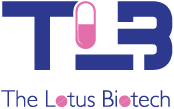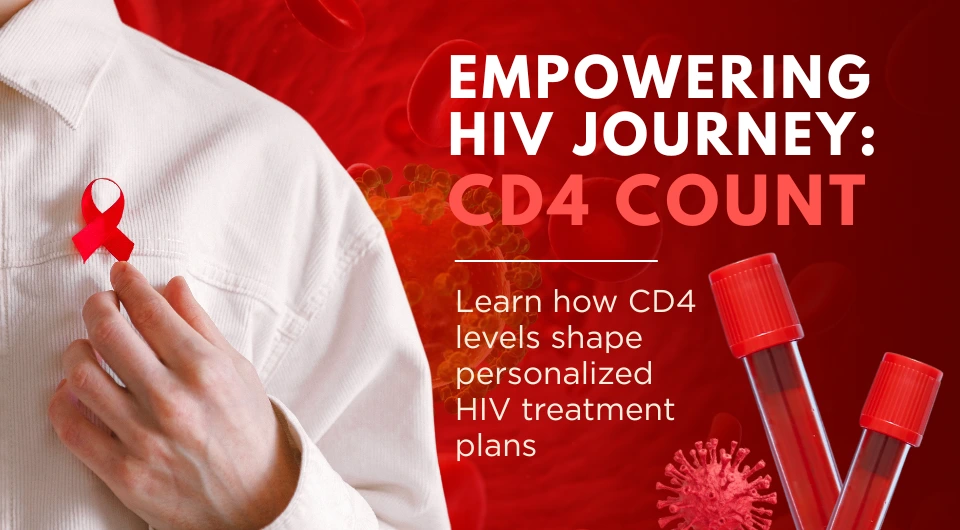Living with HIV can bring many questions, and understanding the nuances of its effect on health is paramount. Among the most crucial indicators in HIV management is the CD4 count. This blog post examines the importance of CD4 count, its role in assessing immune health, informing treatment decisions, and preventing opportunistic infections. We’ll also explore how modern HIV medicines like Albavir, Viropil, and Taficita contribute to improving and maintaining a healthy CD4 count.
What are CD4 Cells?
At the heart of our immune system are specialized white blood cells called T lymphocytes, commonly referred to as T cells. Among these, CD4 T lymphocytes (often simply referred to as CD4 cells) play a central and vital role.
CD4 cells are the “helper” cells of the immune system, identifying and signaling other immune cells to fight off infections, viruses, and diseases.
Now that we have understood CD4 cells, let us proceed to learn about the relationship between HIV and CD4 cells:
- Human Immunodeficiency Virus (HIV) primarily targets and destroys these crucial CD4 cells.
- As HIV progresses without effective treatment, the number of CD4 cells in the body steadily declines, progressively weakening the immune system and leaving the body vulnerable to a range of illnesses.
- Therefore, a CD4 count test measures the number of CD4 cells in a cubic millimeter (mm3) of blood, providing a snapshot of the immune system’s strength and the extent of HIV-related damage.
Normal CD4 Count and Its Significance
Understanding what constitutes a normal CD4 count is essential. For individuals without HIV, the CD4 count typically ranges from 500 to 1500 cells/mm3. In people living with HIV, this range can fluctuate significantly based on the stage of infection and the effectiveness of treatment.
A decreasing CD4 count in HIV directly correlates with a weakened immune system!
A low CD4 count indicates a higher risk of developing severe infections and certain types of cancer, collectively known as opportunistic infections.
The Stages of HIV Infection and CD4 Count
The progression of HIV infection is often categorized into stages, with CD4 count serving as a key marker:
Stage 1- Acute HIV Infection
- Occurs within 2-4 weeks after infection. HIV multiplies rapidly, and while some individuals may experience flu-like symptoms, the CD4 count often drops sharply but then rebounds.
Stage 2- Chronic HIV Infection (Clinical Latency/Asymptomatic HIV Infection)
- During this stage, HIV continues to multiply but at very low levels. Without treatment, this stage can last for 10 years or longer. The CD4 count may still be within the normal range, or it may gradually decline.
Stage 3- Acquired Immunodeficiency Syndrome (AIDS)
- This is the final and most severe stage of HIV infection, characterized by severe damage to the immune system.
An individual is diagnosed with AIDS if their CD4 count for AIDS falls below 200 cells/mm3.
And, or if they develop certain AIDS-defining opportunistic infections, regardless of their CD4 count. More information is provided in Table 1 below.
| HIV Stage | CD4 Count (cells/mm3) | Immune Status & Risk |
| Acute HIV Infection (Stage 1) | Varies; typically >500 | Initial immune response, viral load high, risk of transmission high. |
| Chronic HIV Infection (Stage 2) | Typically >200 (often >500) | The immune system remains relatively strong but is gradually declining without treatment. |
| AIDS (Stage 3) | <200 | Severely compromised immune system, high risk of opportunistic infections. |
Table 1: HIV Stages and Corresponding CD4 Counts (General Guidelines)
Also, it’s important to note that these are general guidelines, and individual responses to HIV and treatment can vary.
Dynamic relationship between CD4 Count and Viral Load
While the CD4 count assesses the strength of your immune system, the HIV viral load measures the amount of HIV in your blood.
These two indicators are intricately linked:
- High Viral Load, Low CD4 Count: Without treatment, high levels of HIV actively destroy CD4 cells, leading to a declining CD4 count.
- Low/Undetectable Viral Load, Increasing CD4 Count: Effective antiretroviral therapy (ART) significantly reduces the viral load, resulting in an increasing CD4 count. This enables CD4 cells to regenerate and increase, thereby restoring immune function. The goal of HIV treatment is to achieve an “undetectable” viral load, meaning the virus is present in such small amounts that standard tests cannot detect it. An undetectable viral load is crucial, as it also means that HIV cannot be transmitted sexually.
(U=U: Undetectable = Untransmittable).
The Critical Role of CD4 Count in Treatment Decisions
In the past, CD4 count was a primary factor in deciding when to start HIV treatment. However, current guidelines from organizations like the World Health Organization (WHO) and the U.S. Department of Health and Human Services (HHS) strongly recommend that,
All individuals diagnosed with HIV should start antiretroviral therapy (ART) as soon as possible, regardless of their CD4 count.
Despite this, the CD4 count remains an incredibly important tool for:
- Assessing Immune Status: It provides a baseline of the immune health at diagnosis and helps track its recovery over time.
- Guiding Prophylaxis: When the CD4 count drops in HIV, especially below 200 cells/mm3, the risk of opportunistic infections in HIV and CD4 count increases significantly. Healthcare providers may prescribe prophylactic medications to prevent these infections. For example, if your CD4 count is below 200, you might receive medication to prevent Pneumocystis pneumonia (PCP).
- Monitoring Treatment Effectiveness: While viral load is the primary indicator of ART’s success, a rising CD4 count confirms that the immune system is recovering and strengthening.
- Identifying Risk for Complications: Even with an undetectable viral load, a very low nadir (lowest-ever) CD4 count might still be associated with a slightly higher risk of certain non-AIDS-related health problems later in life.
How to Increase CD4 Count: The Power of Antiretroviral Therapy (ART)
The most effective and scientifically proven way to increase CD4 count in HIV is through consistent and adherent antiretroviral therapy (ART). ART involves a combination of medicines that work against HIV at different stages of its life cycle, preventing it from multiplying and destroying CD4 cells.
While a healthy diet and lifestyle are generally beneficial for overall health, they do not directly increase the CD4 count in the same way as ART. It is crucial to understand that,
“ART is the cornerstone of HIV treatment”.

Modern HIV Medications: Albavir, Viropil, Taficita
Today’s ART regimens are highly effective, generally well-tolerated, and designed to improve the quality of life for people living with HIV. Medications are often combined into single-pill regimens, making adherence easier.
Let’s look at some commonly used HIV treatment medicines in table 2, keeping in mind that specific combinations and brand names vary:
| Drug | Drug Class | Mechanism of Action | Role in CD4 Increase | Common Side Effects |
| Albavir | NRTI (Abacavir/ Lamivudine) |
Mimics HIV DNA building blocks, halting replication | Suppresses HIV, preventing CD4 destruction | Nausea, headache, insomnia, rash, hypersensitivity |
| Viropil | NNRTI (Efavirenz) | Binds to reverse transcriptase, blocking RNA-to-DNA conversion | Reduces viral replication, aiding CD4 recovery | Dizziness, abnormal dreams, rash, CNS effects |
| Taficita | NtRTI (Tenofovir Alafenamide) | Converts to active form inside cells, inhibits reverse transcriptase with targeted action | Strong viral suppression supports CD4 cell increase | Nausea, diarrhea, headache |
Table 2- Mechanism and Side Effects of Key ART Medications
These medications, when taken consistently as prescribed, significantly reduce the viral load, allowing the immune system to rebuild itself and the CD4 cell count in HIV to rise.
Prophylaxis and Management of HIV/AIDS
For individuals with low CD4 count, particularly those below 200 cells/mm3, prophylaxis for HIV CD4 count is a critical aspect of care. This involves taking specific medications to prevent opportunistic infections that are more likely to occur with a severely weakened immune system. Examples include antibiotics for pneumonia (such as PCP) or antifungals for specific fungal infections.
Regular monitoring of CD4 count and viral load is essential throughout HIV treatment. This helps healthcare providers assess the effectiveness of treatment, adjust regimens as needed, and anticipate potential risks for opportunistic infections.
Thanks to advances in ART, people living with HIV can now lead long and fulfilling lives. Understanding the interpretation of CD4 counts and their connection to overall health empowers you to be an active participant in your care. Regular communication with your healthcare team, adherence to your prescribed medications, and consistent monitoring are key to maintaining a strong immune system and preventing complications.
Disclaimer: This blog/content is for informational purposes only and should not be considered medical advice. Always consult a healthcare professional before starting any treatment. The content is not intended to diagnose, treat, cure, or prevent any condition. Purchase medications only from reputable sources to ensure safety and authenticity.



